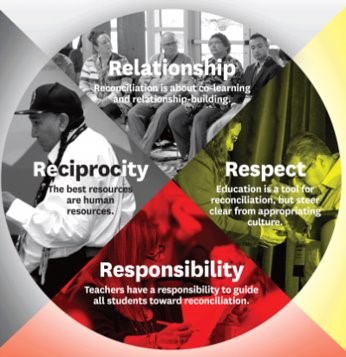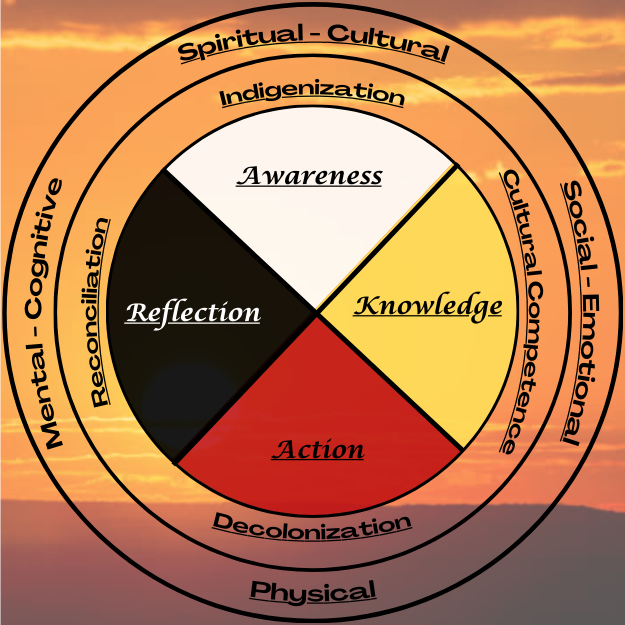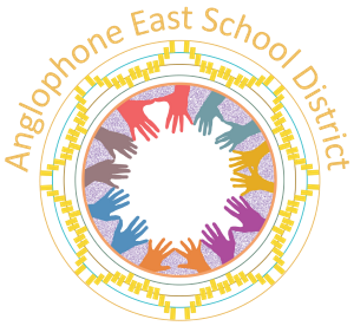
Anglophone East School District would like to respectfully acknowledge that we gather on the unceded, traditional territory of the Mi’kmaq people.
In the spirit of Peace and Friendship, we express gratitude for the history, culture, rights and traditions of Mi’kmaq people and commit to reconciliation through education and honoring those that were here before us.
Why are we learning about Indigenous Peoples?

AWARENESS The Mind
Because it is in the Education Act and 10 Year Education Plan:
Objective 6: Meet the needs of First Nation learners and ensure that provincial curriculum is reflective of First Nation history and culture
Knowledge The Heart
Truth and Reconciliation Calls to Action/Royal Commission on Aboriginal Peoples Report
Actions:
(10) ii. Improving education attainment levels and success rates.
iii. Developing culturally appropriate curricula.
iv. Protecting the rights to Aboriginal languages including the teaching of Aboriginal languages.
vii. Respecting and honouring Treaty relationships.
(62) We call upon the federal, provincial, and territorial governments, in consultation and collaboration with Survivors, Aboriginal peoples, and educators, to:
i. Make age-appropriate curriculum on residential schools, Treaties, and Aboriginal peoples’ historical and contemporary contributions to Canada a mandatory education requirement for Kindergarten to Grade Twelve students.
(63) We call upon the Council of Ministers of Education, Canada to maintain an annual commitment to aboriginal education issues, including:
i. Developing and implementing Kindergarten to Grade Twelve curriculum and learning resources on Aboriginal peoples in Canadian history, and the history and legacy of residential schools.
ii. Sharing information and best practices on teaching curriculum related to residential schools and Aboriginal history.
iii. Building student capacity for intercultural understanding, empathy, and mutual respect.
“We owe the aboriginal peoples a debt that is four centuries old. It is their turn to become full partners in developing an even greater Canada. And the reconciliation required may be less a matter of legal texts than of attitudes of the Heart”
Romeo LeBlanc, 1995
Previous Governor General of Canada
Action The Spirit
As our knowledge builds and we open our hearts to learning the truth in a good way, we can build a safe space for Reconcili’ACTION’. Building relationships of trust and mutual respect opens our eyes to beautiful cultures and provides a foundation for taking action. The ‘spirit’ of a diverse range of peoples cannot be summarized in a small area like this one but there are things that we know for sure – connection to each other, the land and all things that make up this beautiful world is something that Indigenous Peoples have modelled and non-Indigenous people can learn so much. When we know better, we do better!
Reflection
As each person, class or school moves from awareness to knowledge and then onto action, along the journey it is most important to reflect. Questions to consider:
- Have we been able to access good resources?
- Have the students considered Indigenous Worldviews in their learning?
- Have we used (and acknowledged) Indigenous way of being, knowing and doing?
- Was the learning embedded ‘organically’?
- What do I need moving forward?
ORANGE SHIRT DAY
Orange Shirt Day is commemorated on September 30th in recognition of the damage the residential school system has done to Indigenous children’s self-esteem and well-being (orangetshirtday.org). The findings this year of hundreds of unmarked Indian Residential School graves underscores the gravity of the lived experiences of thousands of Indigenous children between 1894 and 1996 in Canada. I would like to encourage your school to participate in Orange Shirt Day which marks a very important and dark moment in Canadian history.
How to teach the history of Orange Shirt Day:
1) Get informed about Orange Shirt Day and its history through this CBC article ;
2) Participate in the Truth and Reconciliation Week from September 27th to October 1rst, 2021 organized by the National Centre for Truth and Reconciliation (i.e. A UNESCO School Teacher from NS, Carter Chiasson, and a former student are part of the program on September 28th at 11:30am EST);
3) Watch some selected video linked to Orange Shirt Day from the NFB;
4) Learn about residential schools through Canadian Geographic’s Pathways to Reconciliation Project . Download the teachers guide to help you navigate this hard history;
5) Get informed about Indigenous Peoples that live in your region of Canada through the Wapikoni Teachers Guide ;
6) Seek to build relationships and better understand Indigenous Peoples in your region of Canada by learning a greeting in their Indigenous language ;
7) Celebrate the heritage, culture, history and achievements of indigenous peoples through literature ;
8) Review the Truth and Reconciliation Calls to Action or be inspired by the work of a UNESCO School, École Laura Secord School in Winnipeg, where Grade 4,5 and 6 students reviewed and interpreted the 94 calls to action in child-friendly language . You can also download a youth-friendly guide to the Truth and Reconciliation Commission of Canada (TRC) 94 Calls to Action from the First Nations Child & Family Caring Society;
9) Be inspired by what other teachers and classrooms are doing across the country through the website Project of Hearts ;
10) Participate in the Imagine a Canada Program
